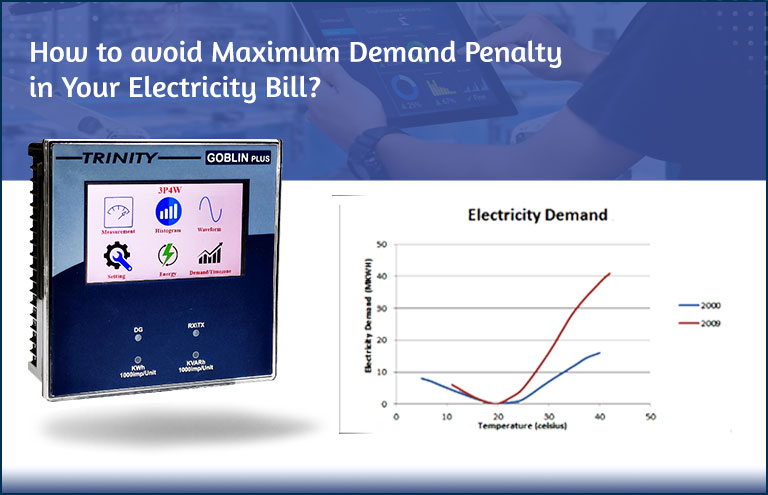Electricity tariffs are rising hence understanding your energy bill is the first step to control your energy use and reduce costs.
There is often a figure shown as ‘Maximum demand’. What does it mean and why should you be interested?
Electricity use is metered and charged in two ways:
- Total consumption (kWh) in a given month.
- Maximum demand (kW or kVA) i.e the maximum power value during a specified time interval, usually the average of 15 minutes (may vary) reached during the billing period.

What can we do to avoid maximum demand penalties on the electricity bill?
To avoid penalties for maximum demand we must ensure that this value will never exceed contracted power.
Usually, in electricity bills, the highest maximum demand value recorded by the meter is compared to the contracted power. Whenever this value is higher than the contracted power, there will be an economic penalty. Therefore, if during the billing month the power exceeds the one contracted, during a period of 15 minutes, the customer will pay a penalty, even if it exceeds only once a month (one month has approximately 2880 fifteen-minute periods).

As shown in the graph, if the maximum demand value exceeds 10 % of the contracted power, the user will pay a 20% increase on the maximum demand term. However if the maximum demand value exceeds 20 % of the contracted power, the user will pay a 50% increase on the maximum demand term.
How to control the Maximum Demand value?
As we have been advancing, the goal to control the maximum demand is to not exceed the limit of the contracted power. To archive this goal, we advise to install a system able to disconnect non critical loads, on different time periods, and also avoid connecting loads simultaneously to reduce the instantaneous power.
Non-critical loads are those that do not affect the main production process or that are not essential, such as:
- Lighting
- Compressors
- Air-conditioning systems
- Pumps
- Fans and extractors
- Packaging machines
- Others
Which devices help us avoid maximum demand penalties?
The main objective of the Goblin Plus series is to manage and control the maximum demand of an installation, also can be used as a Data Logger. To achieve this objective, the device connects and disconnects some loads (non-critical ones) to ensure that the maximum demand will never be higher than the contracted power, avoiding electricity bill surprises. Moreover, the Goblin Plus, allows a tariff control to adjust the loads for being connected on periods with lower price, avoiding high consumptions due to loads simultaneity during high tariff price periods.
GOBLIN PLUS is a multipurpose meter, with all the features needed to implement a robust electrical load management system. It can be configured to suit most control and communication needs. The meter has four LEDs in the front, two to calibrate energies, one to indicate the status of RS485 communication and one to indicate DG Status.
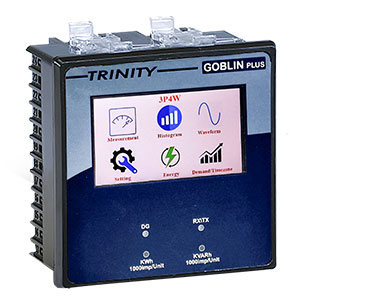
To control the maximum demand level, Screenshots are below:
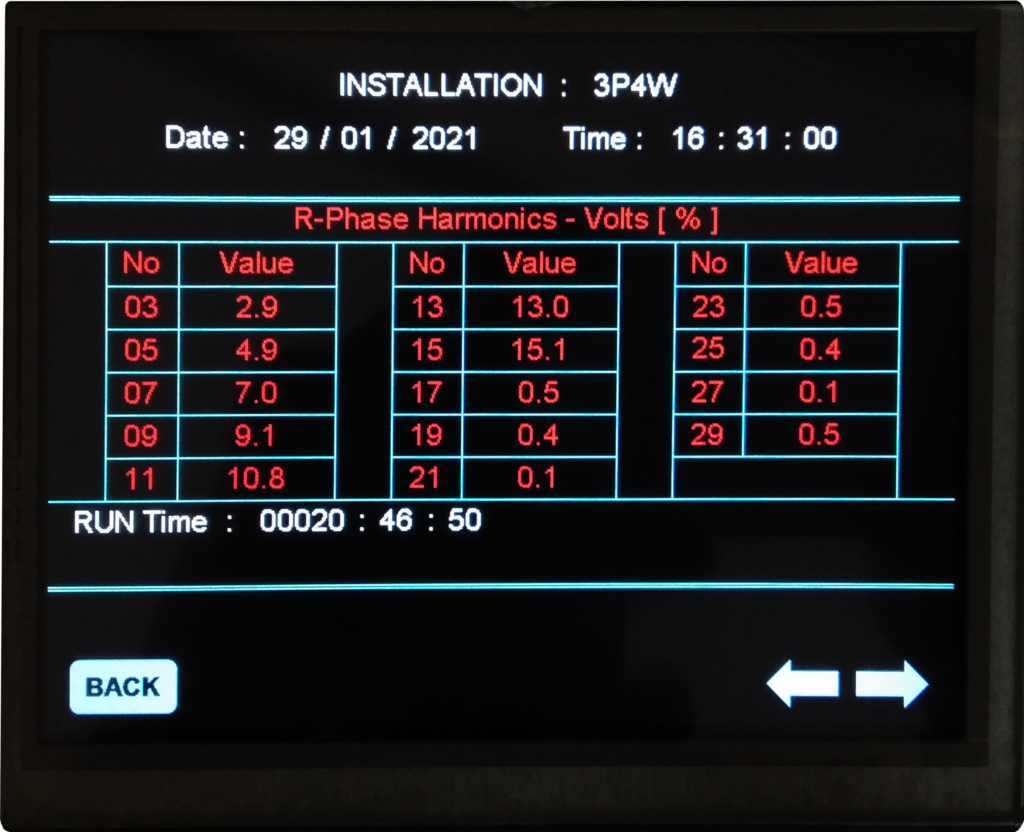
Harmonic-Installation 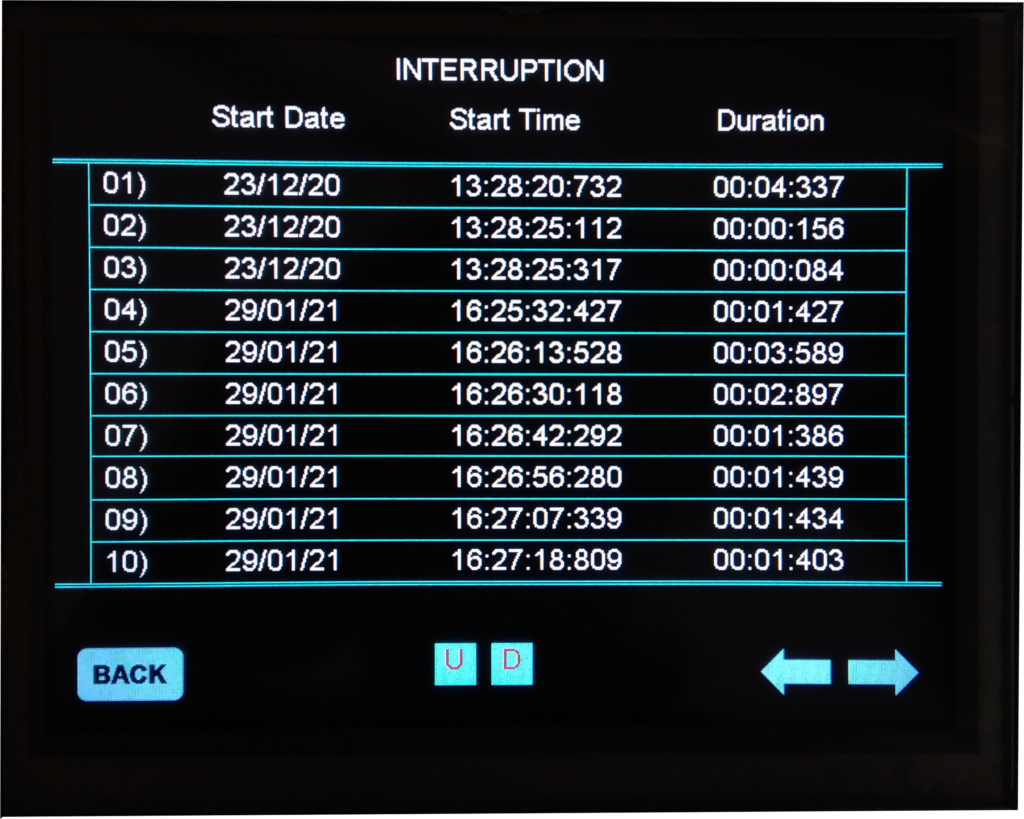
Interruption 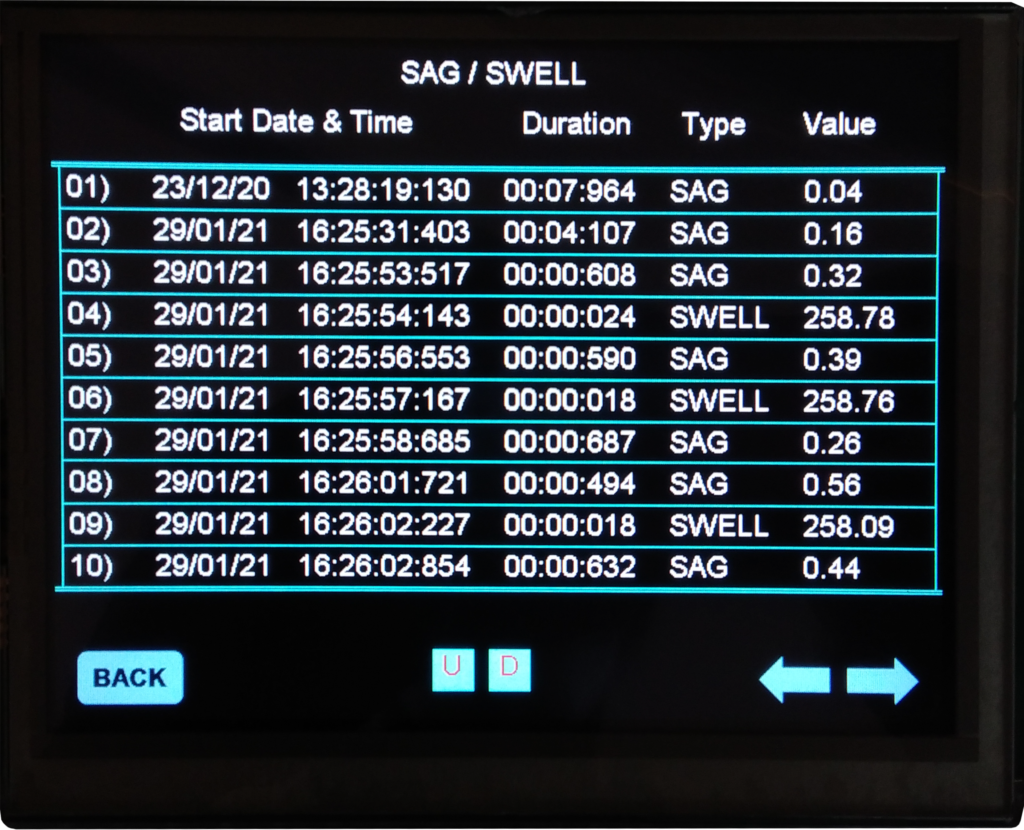
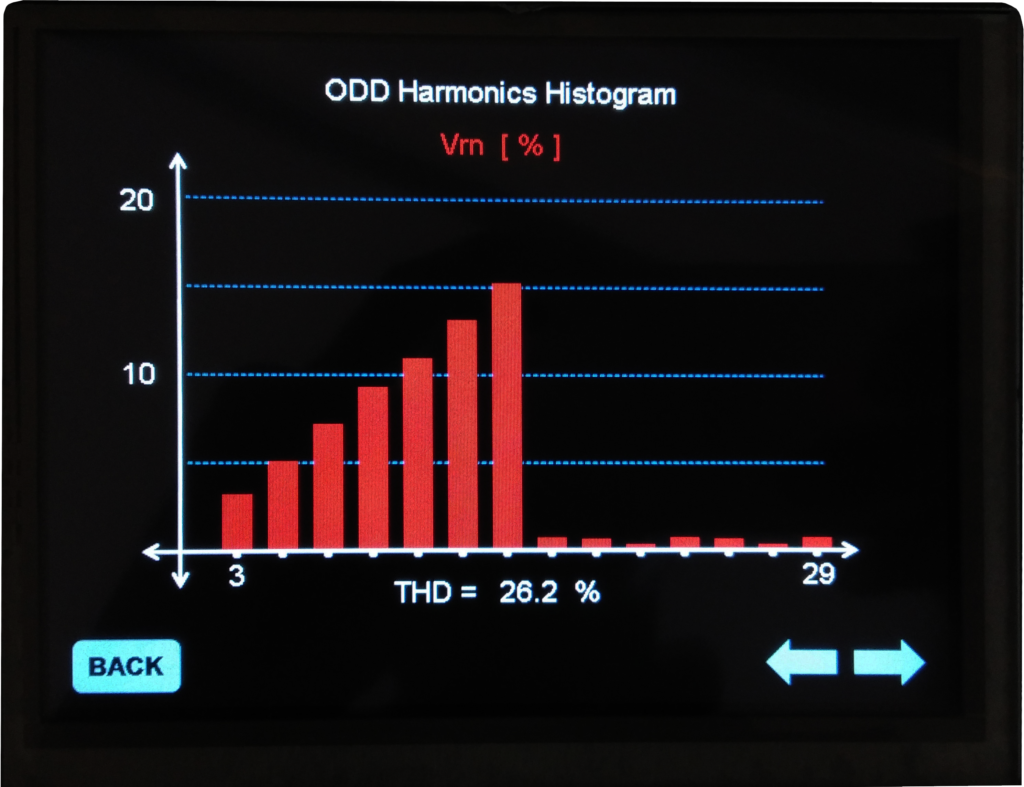
Harmonic Diagram
Product Features:
- All readings are true RMS measurements
- 480 x 272 (RGB) smart TFT display (Touch)
- Site selectable 1A or 5A CT secondary & Neutral CT secondary
- CT Primary, PT Primary and PT Secondary are site selectable
- Three phase current, Phase to Neutral and Phase to Phase Voltages.
- Measurement of all individual Power parameter as well as System parameter.
- Measurement of all System Energy Parameters for both EB (Import, Export) and DG.
- Measure Net Energy for the all system Energy Parameters.
- Measurement of system PF including individual PF in three phases
- at lead and lag side.
- Phase Wise Distortion and Displacement PF.
- Demand Measurement: Fixed or Sling for KW, KVA, KVAR and IAVG
- Individual Harmonics up to 30th for voltage and current.
- Voltage and current THD.
- Measures Neutral current.
- Current Phase Angle (Angle between Ir – Iy, Iy – Ib and Ir – Ib).
- Voltage Phase Angle (Angle between Vr – Vy, Vy – Vb and Vr – Vb).
- Phase Angle between Voltage and Current (Vr – Ir, Vy – Iy and Vb – Ib)
- Voltages unbalance percentage (%VR, %VY, %VB).
- Current unbalance percentage (%IR, %IY, %IB).
- ON Hour and Run Hour (Import, Export, DG).
- Interruption Date and Time for 180 Events.
- Sag and Swell Value, Date and Time for 180 Events.
- Min – Max Data with Date and Time.
- Real Time – Date and Time.
- Energy Pulse Output on the LED.
- RS-485 port for connection to SCADA/EMS.
- RS-485 communication indication RX/TX LED.
For More details, Mail us: info@trinityenergy.co.in


